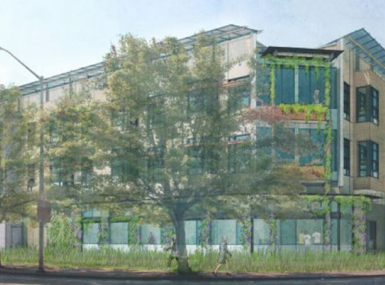Child welfare program asks families: ‘What do you need?’ before their breaking point

Key Takeaways
Dealing with an unprecedented number of complex child welfare cases, Stearns County, Minn. decided to bring together staff from schools, law enforcement, the health care system, mental health providers, probation and social services to create a Juvenile Community Action Team to proactively address the kinds of issues that propel families to a breaking point.
The team puts a family at the center of decision-making, restructuring the traditional process that sees child welfare staff stepping in after a family is in crisis.
Families tell the team what they need — such as counseling, access to food, childcare or medical care — and the team connects them to those resources and services, according to Melissa Huberty, Stearns County human services administrator.
Learn more
“That takes time, that takes trust-building, but it’s one of the cultural shifts we made – that families are at the center of this, and they’re the ones driving the plan,” Huberty said. “… And I think historically, systems don’t do that. They tell the family what they need to do ‘X, Y and Z,’ and it’s always the stuff that the family really doesn’t find useful or what’s not going to get them out of this mess.”
During the COVID-19 pandemic, child welfare cases in the county “skyrocketed,” which can partially be attributed to an increase in such issues as domestic violence and substance abuse, Huberty said. Because the county systems worked in silos, the child welfare system was left unsupported and overburdened. Prior to the creation of the Juvenile Community Action Team, 22 children were housed for 67 days in the county building, with nowhere to be placed.
“We’re no longer babysitting children in the county buildings, because we’re being more preventative and getting upstream, and we’re generally preventing those deep-end issues before they happen,” Huberty said. “And we can only do that with the collaboration of all these partners, because every system plays a role.
“It also depends upon what’s going on in the family. Sometimes, it’s health issues, and we need the health system. Sometimes it’s criminality, and we need help from law enforcement.”
The Juvenile Community Action Team started with the school system, by engaging the superintendent, principals and school counselors for early identification of children and families who were most likely to end up in the child protection and/or criminal justice system, Huberty said.
“By second or fourth grade, they can already tell us ‘This child and family are going to be in your system in five or 10 years,’” Huberty said.
Not all stakeholders were on board at first, she noted.
“Just because we’re a small county doesn’t mean they all went, ‘Hey, that’s a great idea. I’d love to be at the table with you,’” Huberty said. “We just decided to start with the people who were willing to be at the table, and when we started having successes, and people were saving money, and our families are actually being served — the child’s not in the ER being housed anymore, or not sitting in jail, or whatever it is — that word gets out real quick, and pretty soon, partners start coming to the table.”
Since the Juvenile Community Action Team was created in 2022, the number of out-of-home placements, youth in the criminal justice system and length of time youth spend in care have all been reduced in Stearns County. The team currently serves 13 separate families who collectively have 16 adults and 43 children.
Better serving families so that they can stay together reduces trauma for children, who otherwise often must separate from not only their parents, but also their siblings if they’re placed into foster care, noted Nicholas Henderson, human services director of the Stearns County family and children’s division.
One of the larger families the team serves who previously had a negative experience with child protection services wrote Henderson letters saying how much the support positively changed their trust in the system, he added.
Stearns County is a predominantly rural area, and outside of the St. Cloud metro area, residents might have to travel 70 miles to receive services, Henderson noted. To better connect residents to support, the team contracted with an intensive in-home program to provide quick access to mental health intervention — which is bolstered with resources such as food, clothing and transportation assistance — to stabilize a family’s home environment until a more long-term plan is created, Henderson said.
“As families are working through mental health struggles with their children, oftentimes, when they say, ‘I no longer can do this,’ it’s not that they don’t’ love their children, it’s that they no longer can care for them or safely provide or have that child in their home,” Henderson said. “So, we’ve looked at creative ways that we could break down those barriers and get them greater access to services.”
Through bringing its systems together, Stearns County is not only better serving families but also saving money, Huberty said. The county is on track to save $1 million this year alone from its reduction of out-of-home placements.
“As families started to access and receive these services, we started to see their needs come down, and our community health ultimately improved,” Huberty said. “The services are out there, but sometimes when they’re in that state of crisis and state of panic, they just need someone to help them get there before they have that major life event.
“But usually what happens systemically is we can’t be involved, we can’t help [before a crisis]. But we can all help, and especially if you want to receive these services on a voluntary basis, we will absolutely be glad to help and not see you enter through our doors.”
Related News

Sonoma County creates solutions to homeless crisis
Wildfire devastation and the COVID-19 pandemic contributed to a homelessness crisis in Sonoma County, Calif., prompting the county to create more comprehensive housing offerings to better meet the needs of its most vulnerable populations.

U.S. Senate Committee approves legislation to reauthorize programs for older adults
On July 31, the U.S. Senate Committee on Health, Employment, Labor and Pensions (HELP) approved the bipartisan Older Americans Act Reauthorization Act of 2024 on a 20-1 vote.

Arizona county leads nation in identifying indigent remains
Pima County seeks to offer closure to next of kin following the death of an indigent person.
County News
Helping children left behind by trauma

